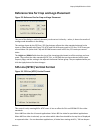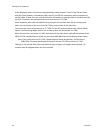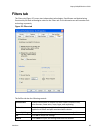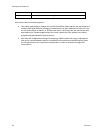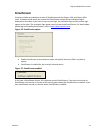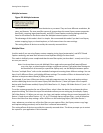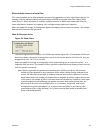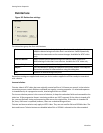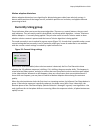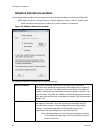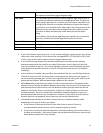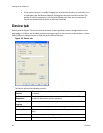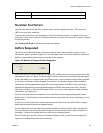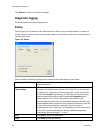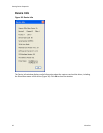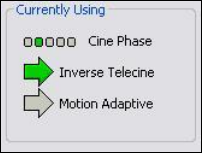
Osprey 240e/450e User Guide
ViewCast 35
Motion adaptive deinterlace
Motion adaptive deinterlace is an algorithm for deinterlacing pure video (non-telecine) content. It
detects which portions of the image are still, and which portions are in motion, and applies different
processing to each.
Currently Using group
These indicators allow you to see the current algorithm. These are not control buttons; they are read-
only indicators. They are mainly useful in Auto Mode, to indicate which algorithm – Inverse Telecine or
Motion Adaptive – is currently being applied. They are also useful in Inverse Telecine mode to show
whether telecine content is present and the Inverse Telecine algorithm is being applied.
The mode currently in use is marked by a green arrow (Figure 31). A mode that is possible under current
control settings but not currently in use is marked by a dark grey arrow. A mode that is not available
with the current control settings is marked by a pale outline arrow.
Figure 31. Current Using settings
With inverse telecine enabled, when telecine content is detected, the five Cine Phase dots show
whether the 3:2 pulldown sequence is shifting. If it is shifting, the green marker shifts. This happens in
mixed telecine/video content, and also in content that was converted to telecine and then post-edited
in the video domain. Whenever a shift happens, there are a few frames that are not deinterlaced. If
these shifts are frequent, you may have to switch to Motion Adaptive deinterlacing for consistent
quality.
When the telecine detector locks the first time in a streaming session, the leftmost Cine Phase button is
green. If the telecine sequence is perfectly coherent, the phase never shifts. Once it does shift, the
absolute phase of the Cine Phase display (which of buttons 1 through 5 is green) is not significant – the
only significant fact is that phase shifts are occurring. When the sequence relocks, all phase buttons are
equally correct.



